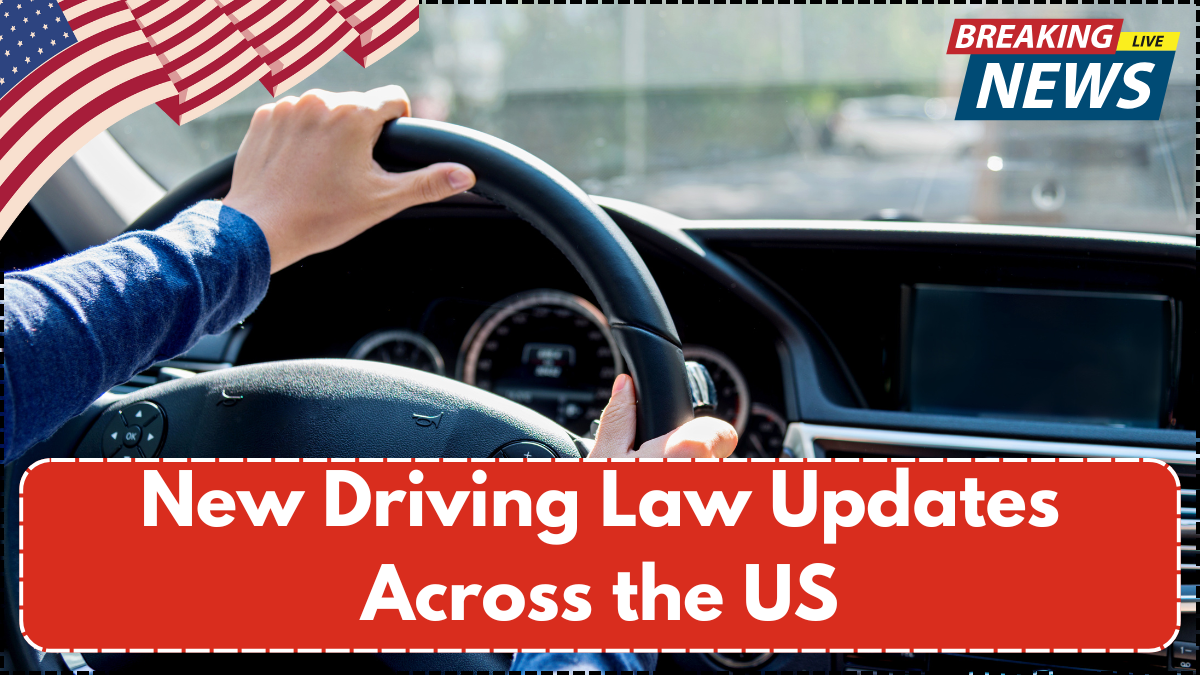Beginning August 2025, drivers across the United States will face a wave of new driving rule updates. As states respond to evolving safety concerns, technological innovations, and climate policy goals, these new US traffic laws aim to reshape the way Americans interact with the road. Whether you’re a commuter, trucker, or rideshare driver, understanding these changes is essential to staying compliant and safe.

Major Driving Rule Updates Taking Effect in August 2025
Several state and federal-level policy shifts are rolling out nationwide, though specifics may vary by region. The following are among the most significant:
Nationwide Ban on Manual Cellphone Use While Driving
States are tightening enforcement on distracted driving. Starting August 2025, a federally backed initiative will penalize all handheld phone use, including at stoplights. Voice commands and dash mounts will be the only permissible methods.
Expanded Speed Regulation Zones
More urban and suburban areas are being converted into speed-regulated corridors, with automatic speed detection cameras enforcing compliance. These zones target school vicinities, hospitals, and pedestrian-heavy downtowns.
Key Driving Rule Updates by State
| State | Key Update | Penalty Increase | Effective Date |
|---|---|---|---|
| California | Zero-emission vehicle-only lanes | $200 for first offense | August 1, 2025 |
| Texas | Mandatory front dashcams for fleets | Fleet license suspension | August 15, 2025 |
| Florida | Motorcycle helmet use reinstated | $150 fine | August 10, 2025 |
| New York | 25 mph citywide speed limit cap | Points + $100 fine | August 5, 2025 |
| Illinois | Ban on eating while driving | $75 fine | August 20, 2025 |
Emissions Monitoring Through Smart Tags
To meet federal environmental targets, many states are adopting smart license tags that track emissions in real-time. Drivers exceeding emissions thresholds may receive mailed warnings or fines. This system also notifies the DMV if a vehicle fails compliance over multiple months.
Enhanced Penalties for Road Rage and Aggressive Driving
Driving behavior is under the microscope in 2025. States are implementing tougher penalties for tailgating, brake-checking, and aggressive lane changes. Infractions now include mandatory driving courses and steeper insurance rate hikes.
What These Changes Mean for Drivers
While many of these rules might seem strict, they are designed to reduce accident rates, enhance fuel efficiency, and modernize traffic enforcement. Drivers should check with their local DMV or Department of Transportation for specific implementations. Fleet operators and transportation businesses are particularly encouraged to audit their current compliance strategies ahead of the rollout.
Stay Ahead: How to Prepare for the August 2025 Changes
- Upgrade tech: Consider investing in a Bluetooth-enabled infotainment system if you frequently use your phone in the car.
- Review vehicle emissions: Ensure your car is well-maintained and within the legal emissions range.
- Understand local rules: Each state has autonomy to implement specific measures, so regional awareness is critical.
Conclusion
The new US traffic laws rolling out in August 2025 represent one of the most comprehensive overhauls in recent memory. With an eye on safety, sustainability, and technological integration, these driving rule updates aim to future-proof the American roadway system. Staying informed and proactive is not just smart—it’s essential.
FAQs
What is the main reason behind these driving rule updates?
The primary goals are to reduce road accidents, curb emissions, and better integrate modern technology into traffic enforcement.
Are all these updates mandatory in every state?
Not all changes are federally mandated. While some rules are nationwide, others depend on state legislation and local policy.
How will the handheld phone ban be enforced?
Law enforcement will rely on roadside cameras, officer observation, and citizen reporting apps in some jurisdictions.
Can older cars comply with the emissions monitoring law?
Older vehicles may be exempt in some cases or required to undergo retrofitting to meet updated standards.
What should commercial drivers focus on?
Commercial drivers should ensure their fleet complies with dashcam mandates, emissions standards, and updated rest period enforcement.
For More Information Click Here



